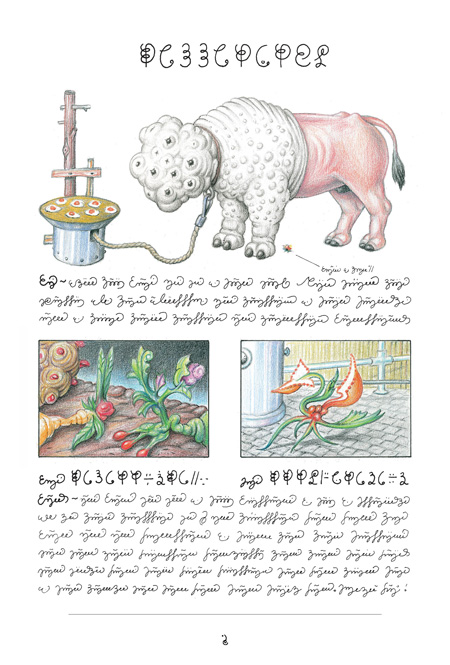Port’s editor-in-chief Dan Crowe delves into the enigmatic charm of Luigi Serafini’s newly re-published book
“I was 27 years old and was using coloured pencils and a sketch pad to draw several hybridized human bodies with prostheses in the shape of claws, a bicycle wheel, and a fountain pen, as if I were at the cyborg-nude figure drawing school of some Academy of Spatial Fine Arts.”
And so begins Luigi Serafini’s introduction to the Codex Seraphinianus (Rizzoli), newly republished 32 years since its first appeared. Evoking an alien encyclopaedia from some neighbouring civilization, Serafini started work on the picture-led book, tucked away in a small apartment in Rome, in 1976. The detailed plates are displayed alongside flowcharts, network diagrams, Venn diagrams, geometric shapes, lists, quantitative data, backed up with what look like pages and pages of notes and explanations; like a da Vinci page of sketches. However, we notice that what we are looking at seems to have no discernible objective meaning.
It brings to mind the Naturalis Historia by Pliny the Elder and, of course, Hieronymus Bosch paintings; but also the playful violence of Rebecca Horn’s art, with her butterfly machine units and self shooting guns, and Flaubert’s Bouvard et Pécuchet, containing the ‘Dictionary of Received Ideas’ – without any literal understanding of the text, Serafini asks us to remember what it’s like to be a child. It’s a refreshing experience.
The writing’s form itself meanders in curlicues and arabesques, and from this interweaving he creates punctuation, even upper and lower case fonts and what appears to be syntax. There are many followers who believe it’s a real language, although Serafini himself denies this.
Making ends meet during the 3 years of initial drawing, a period of harshness where money was scant, Serafini worked with architects who helped him with the accuracy of his impossible drawings.
The author admits at the end of the introduction that his book was in fact authored by a stray white cat that came to live with him one night, casually transmitting its own dreams and feelings as it slept on his shoulders and he drew. This makes a great deal of sense.





